How to Install a Travertine Tile Backsplash
Travertine stone is a warm-colored porous material related to limestone that is prized for its ability to instantly add a look of sophistication to any building project.
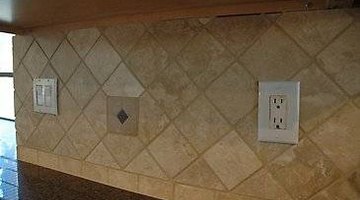
Well suited for use in residential bathrooms and kitchens, travertine tiles are available beginning at only a few inches square to several feet across. A beautiful use of travertine is as a backsplash in the kitchen. This article will show you the installation of a travertine tile kitchen backsplash from start to finish. The mortared tiles must be allowed to rest overnight before the project can be completed, so it is best to leave this project until an uneventful weekend appears in your schedule. Adding travertine tiles can modernize any home, imparting a simple elegance.
-
Lay your tile out on a flat surface or counter to determine your pattern. Make careful measurements and take note of them before you begin. If you are using inlays, include them in the plan of your designs. Remove all cover plates from electrical outlets and shut off the power that services them.
-
Put on your safety glasses and turn on the wet tile saw. Use the saw to carefully cut the tiles for your chosen pattern and border. Turn off the wet saw once all of the tiles have been cut to size. Mix the thin set mortar according to the manufacturer's directions to the thickness of firm cream cheese or peanut butter.
-
Put a layer of mortar on the notched trowel. Hold the trowel at an acute (about 45 degrees) angle to the wall for the best application. Beginning at a corner, thinly apply the mortar to a section of wall.
-
Press the first tile against the wall, and slightly move it rapidly back and forth in place to create a vacuum seal.
-
Put tile spacers between the tiles to keep the spacing uniform. For this project, the bottom row/border was put into place first, before diagonally cut triangular shaped tiles were placed above. Full tiles were then used, turned at an angle for a diamond effect. Some of the tiles were cut to accommodate the planned inlays and to allow for electrical outlets. Remember to put in spacers as you work.
-
Finish your design and permit your tiles to set overnight for 24 hours. Remove the spacers and apply grout to the new travertine tile backsplash. Replace the electrical outlet covers, and restore power to the kitchen wall.
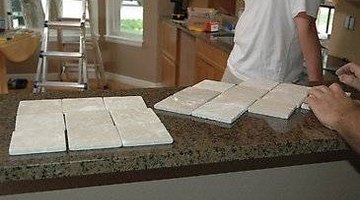

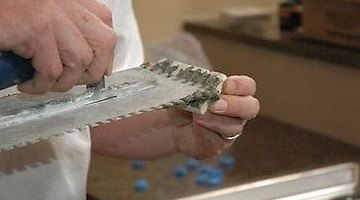
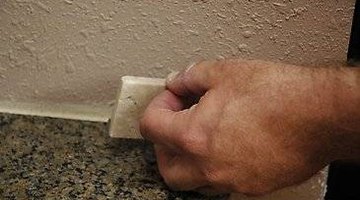
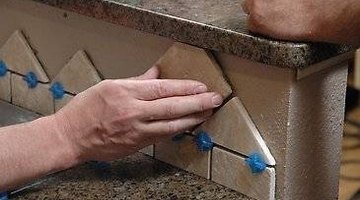
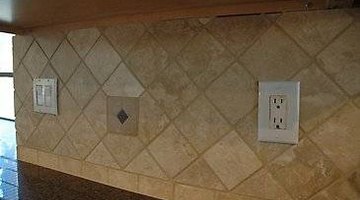
Things You Will Need
- Safety glasses
- Travertine tiles
- Inlay tiles or design tiles (optional)
- Measuring tape
- Tile spacers
- Wet tile saw
- Thin set mortar
- Notched trowel
- Grout
Tip
Remove any excess mortar with a clean cloth to avoid staining the porous travertine tile. Travertine stone tiles can be slightly different sizes or uneven, but will appear uniform once grouted. Always put on your safety glasses first before operating the wet tile saw. Cut the tiles slowly, keeping your fingers well away from the blade.
Warning
Always measure twice (or more) and cut once whenever possible. Whenever you are in doubt about how much tile needs to be trimmed or cut, always cut conservatively. You can always cut more if necessary, but you cannot reattach a cut piece without ruining your design.
Purchase three to five percent more tiles than you think you may need, in case you happen to break or damage some of them. Nothing is better than being prepared.
Writer Bio
Genae Valecia Hinesman, former banking executive, entrepreneur and fashion model, began writing professionally in 2002. She is a Cum Laude graduate of the University of Southern California where she studied business, finance and exercise physiology. Her articles featured in Living Healthy: 360, Life 123, the American Chronicle and Yahoo Voices.
Photo Credits
- DIY Network
- DIY Network
More Articles



